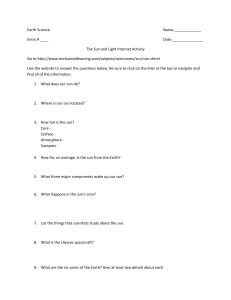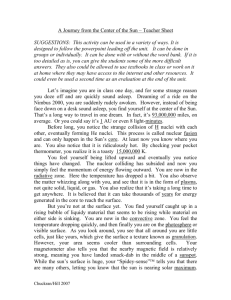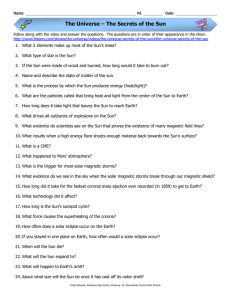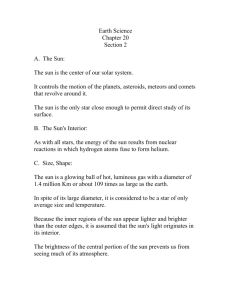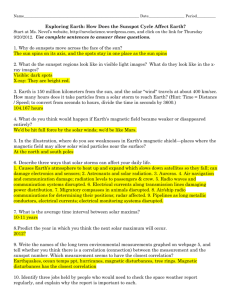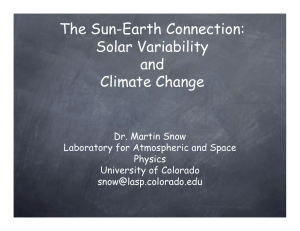15 September: Basic properties of the Sun
advertisement
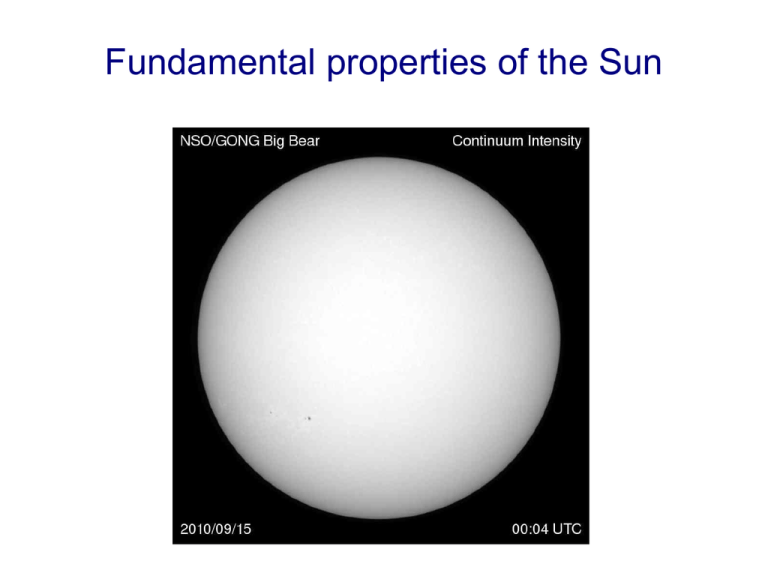
Fundamental properties of the Sun Last time • Described the Sun’s size (diameter), mass, chemical composition, and temperature • Today, additional features as preparation for solar observing lab The Sun rotates (spins on its axis) Movie on SDO website Rotation period = 24.7 days at equator, increases to 36 days at poles, differential rotation The Sun has a sharp disk, like the Moon How is this possible when the Sun is a ball of hot gas? The density in the solar atmosphere increases rapidly from very low values in interplanetary space to very high values, and it becomes opaque within an interval of altitude of about 200 kilometers (out of 696,000) The region in the solar atmosphere where the gas becomes opaque and from which sunlight comes is referred to as the photosphere The temperature in the solar photosphere is hot (5800K=9981 degrees Fahrenheit), but it is even hotter deeper in the Sun Solar granulation…a boiling motion of the surface of the Sun Next topic: the active Sun Sun of October 30, 2003 We’ll see next week Structure of a Sunspot Sunspots are regions of very strong magnetic field (2000 Gauss) Demo Indication that magnetism is connected with sunspots…measurement of magnetic fields on the surface of the Sun via the Zeeman Effect The magnetic Sun White light Magnetic field Solar magnetic fields reach far out into space The 11 Year Solar Cycle The Sun has a “heartbeat”; its properties change on a period of 11 years Latest data on this sunspot cycle An indication that our knowledge of the solar cycle is far from perfect Predictions in 2007 Observations and predictions as of today Sunspots are the sites of big explosions (solar flares and coronal mass ejections) The Sunspot Cycle has been going on for a long time Observations show cycle persisting, but “turning off” from 1650 to 1730 (Maunder Minimum) The Solar Wind • A wind past the Earth at 400 km/sec • The Sun is “melting away” • Density 19 orders of magnitude less than atmosphere • A medium for solar events • May have “sandblasted” the early atmosphere of Mars The Lesson for Other Stars • Do they also have sunspots, sunspot cycles, etc? • How does all this (magnetic fields, solar wind, rotation) relate to the age of a star?
